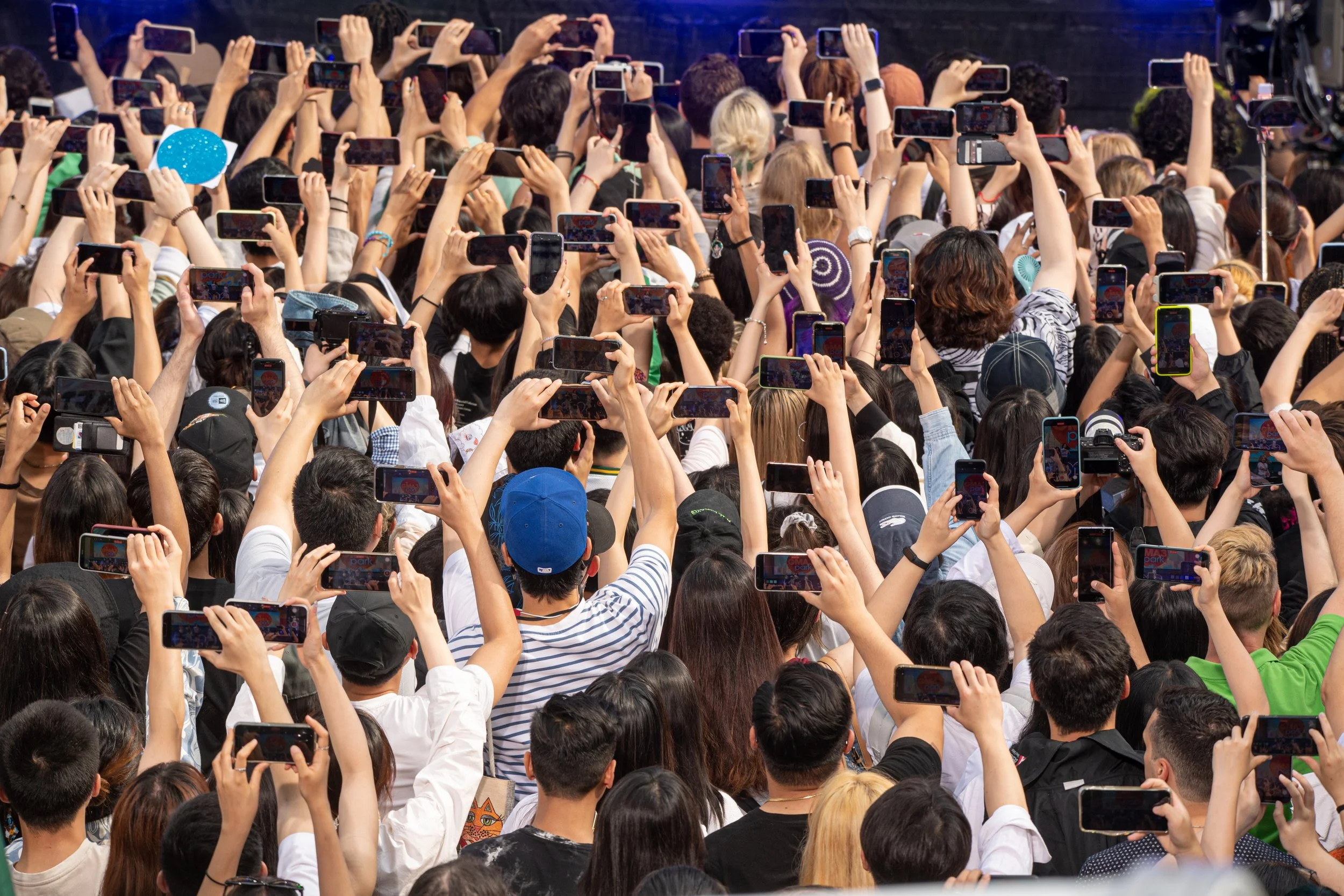Continue Reading
Biggest Finance Newsletter for Women
Join 200,000 other people interested in money, power, culture, and class.
Subscribe

A very bleak find on Getty Images.
No sooner had I pressed “Complete Purchase” on four roundtrip tickets from New York’s John F. Kennedy airport to Paris’s Charles de Gaulle did I begin involuntarily envisioning the trip through a 16:9 aspect ratio.
Captions appeared swiftly, as naturally as intrusive thoughts. My brain produced puns of its own accord, a vestige of my frontal lobe’s formative years spent refracting my lived experience through the omnipresent perception of a digital audience.
This is a pathetic admission, I know, but having owned and operated social media profiles since the 7th grade, I’ve been neatly packaging my life for public consumption longer than not. This is a problem, of course, because a 5-inch screen is definitionally a limited lens through which to experience all that is unfolding around you—but its legitimizing force can feel inescapable. (“Pics or it didn’t happen,” as it were.)
I remember this compulsion feeling especially strong when I was in college, a time when Instagram was at its relative peak (that is, pre-TikTok) and my self-esteem was at its relative low (that is, in a sorority at Alabama). Instagram was a platform where Cool Girl™ personal brands were meticulously confected. This meant the first half hour of any social event featured an unspoken agreement amongst attendees that we shared a mutual goal: Obtain flattering photographic evidence we were there. The following 15 minutes saw a shift into the second phase, in which our attentions were singularly absorbed into the blue glow of our screens as we swiped, scrutinized, cropped, and captioned, retouching and revising a memory that was still currently underway.
What’s most alarming, in retrospect, is how reflexively we adopted this routine that would be utterly confounding to the vast majority of humans who lived before the year 2000. Today’s coeds, who must also double as mini self-aggrandizing Scorseses given video’s dominance in the online world, have it even worse, and they seem to know it: This unremarkable video of the last day of school at Glendora High in 1999 has been viewed more than 4 million times, and its comments section is littered with young people pining for a phone-free youth that they’ll never know.
I imagine a lot of young people feel the way I did when I was in my teens and early twenties—anxious to assemble my experiences into a cohesive online self, even if that meant mining my life for the raw materials necessary to do so.
It’s probably no surprise, then, it’s frequently reported that Gen Z prefers spending money on experiences over material possessions. They may have been “born into the digital world,” one source declares, “but are increasingly trying to find real-world experiences.” As barely-not-Gen Z myself, I hear this high-minded sentiment—look at the Zoomers; so wise and in-the-moment—and know better. Having been a teenage girl in Zuckerberg’s America, I know that even experiences—especially experiences!—exist to be commodified and curated for digital clout points.
And as earnestly as I mean these words, I realize the inherent irony that I am, technically, a capital-P, capital-C Professional Content Creator. I use Instagram as part of my work, and self-documentation is (literally) in the job description—but the majority of it pertains to sharing ideas, not my personal life (which carries with it its own host of complications).
“I kept struggling to decide whether to film it or just be present and enjoy it,” my friend told me after a recent show we attended, in a simple but profound recognition that you cannot do both simultaneously. There’s an innate tension between the two, as the former—filming with the intent to “post”—requires adopting the perspective of an endless audience comprising everyone you’ve ever met and then some people you haven’t, while the latter is about forgetting an audience altogether. You can perform and externalize your life, or you can experience it.
It’s not merely the phone physically separating you from it, but the revisionist history that follows the documentation. Something that begins as whole and complex and human is flattened; cheapened into two-dimensionality. In that process, the original memory is irrevocably corrupted. Several studies in the last decade indicate that the “life” that gets discarded in the sculpting process falls away more quickly from our memories, altering them. Psychology Today warns that “sharing our personal experiences online may produce a narrow version of our life stories.”
And it’s not just our memories in the future that stand to suffer—it’s our experiences in the present, too. Researchers Barasch, Zauberman, and Diehl found that “taking pictures with the intention to share them [on social media] reduces enjoyment of experiences” because it “increases self-presentational concern during the experience, which can reduce enjoyment directly, as well as indirectly by lowering engagement with the experience.”
In that sense, maybe social media encourages us to buy experiences as though they are possessions—digital trinkets with which we’ll adorn our algorithmic front yards and, in the process, sell our claim to our own memories for the low, low price of “free” (unless, of course, it’s #sponsored). Paradoxically, the more special and sacred the moment, the more we feel compelled to document and share it; to take ourselves out of it in order to give it away.
Maybe this is hard to accept because the prevalence of the alternative sentiment is so powerful: “If I spent all this money on XYZ, I better get some content out of it!” But if we’re not careful, the experience becomes just another commodity; beside the point, rather than the point itself. What a #waste!
May 27, 2024
Looking for something?
Search all how-to, essays, and podcast episodes.
Explore
While I love diving into investing- and tax law-related data, I am not a financial professional. This is not financial advice, investing advice, or tax advice. The information on this website is for informational and recreational purposes only. Investment products discussed (ETFs, index funds, etc.) are for illustrative purposes only. It is not a recommendation to buy, sell, or otherwise transact in any of the products mentioned. Do your own due diligence. Past performance does not guarantee future returns.
Money with Katie, LLC.
Terms & Conditions | Privacy Policy
This Site Was Built by Brand Good Time



